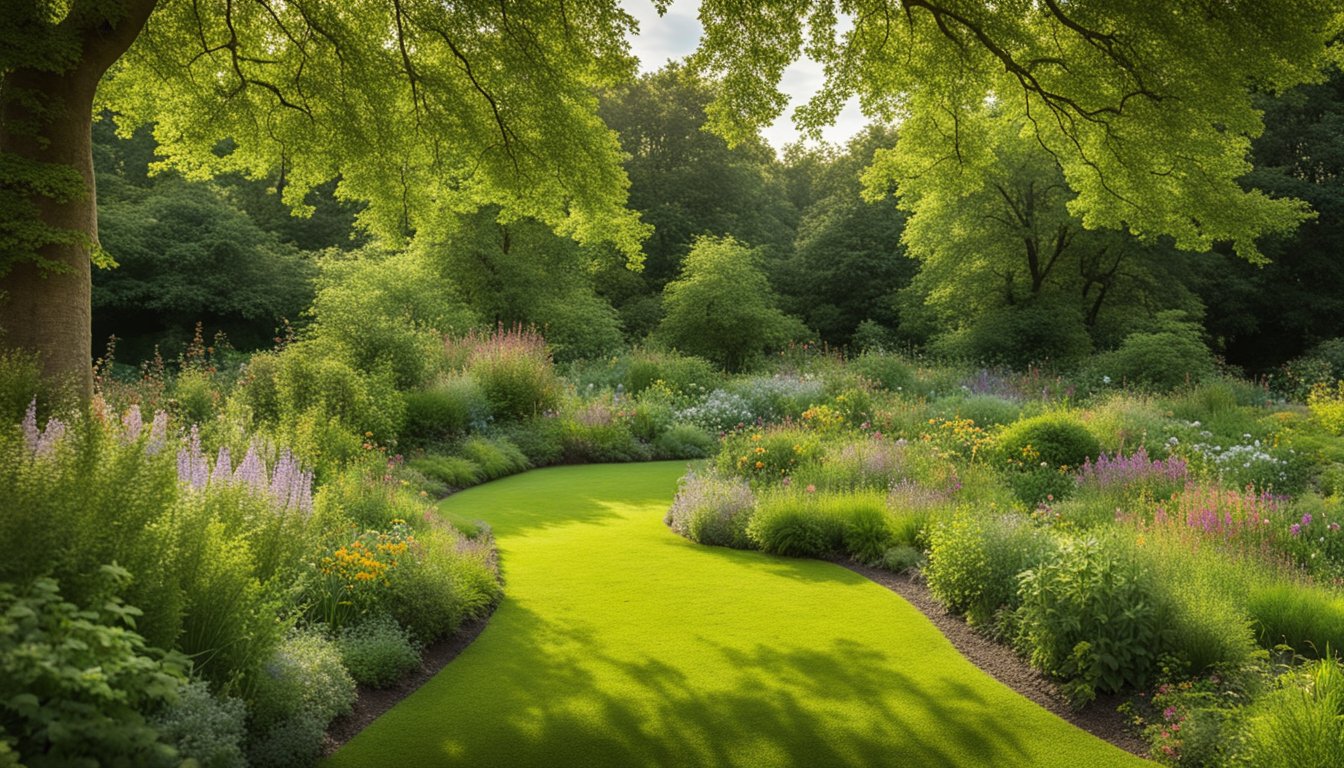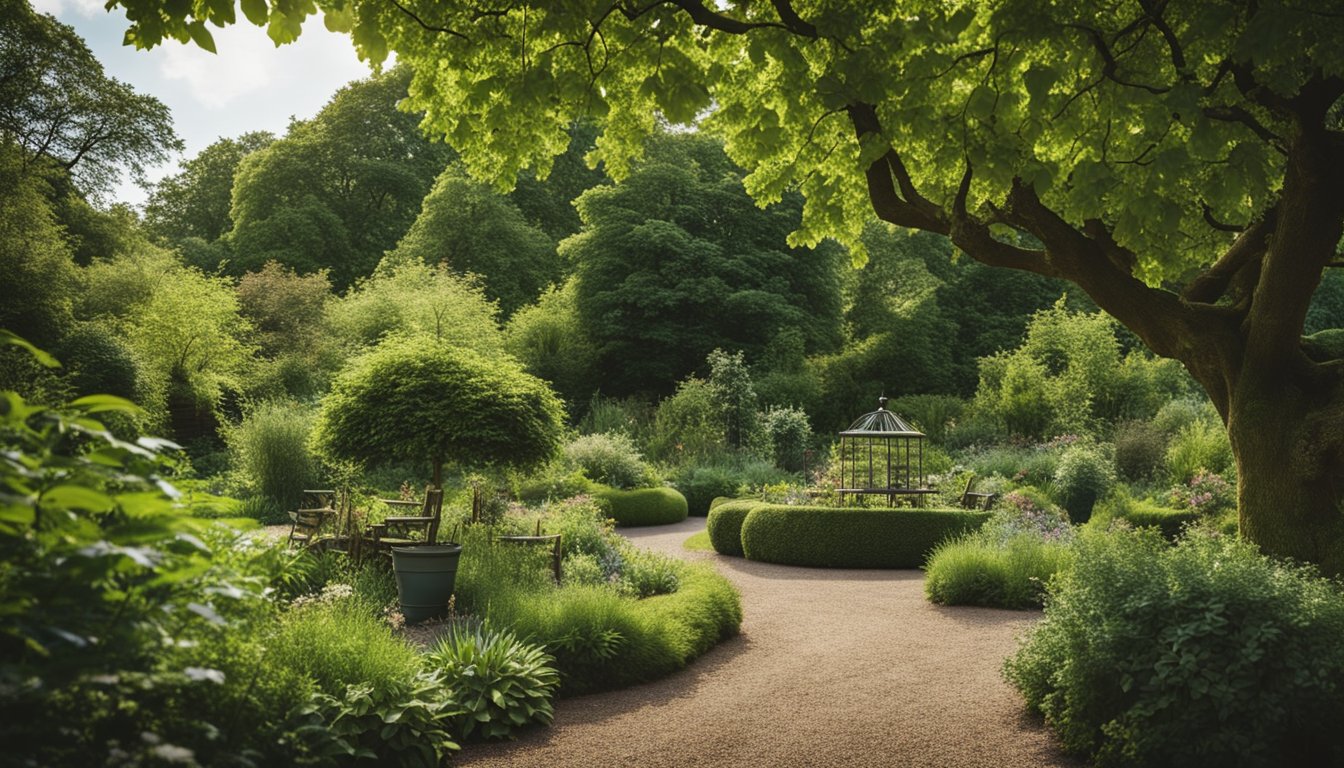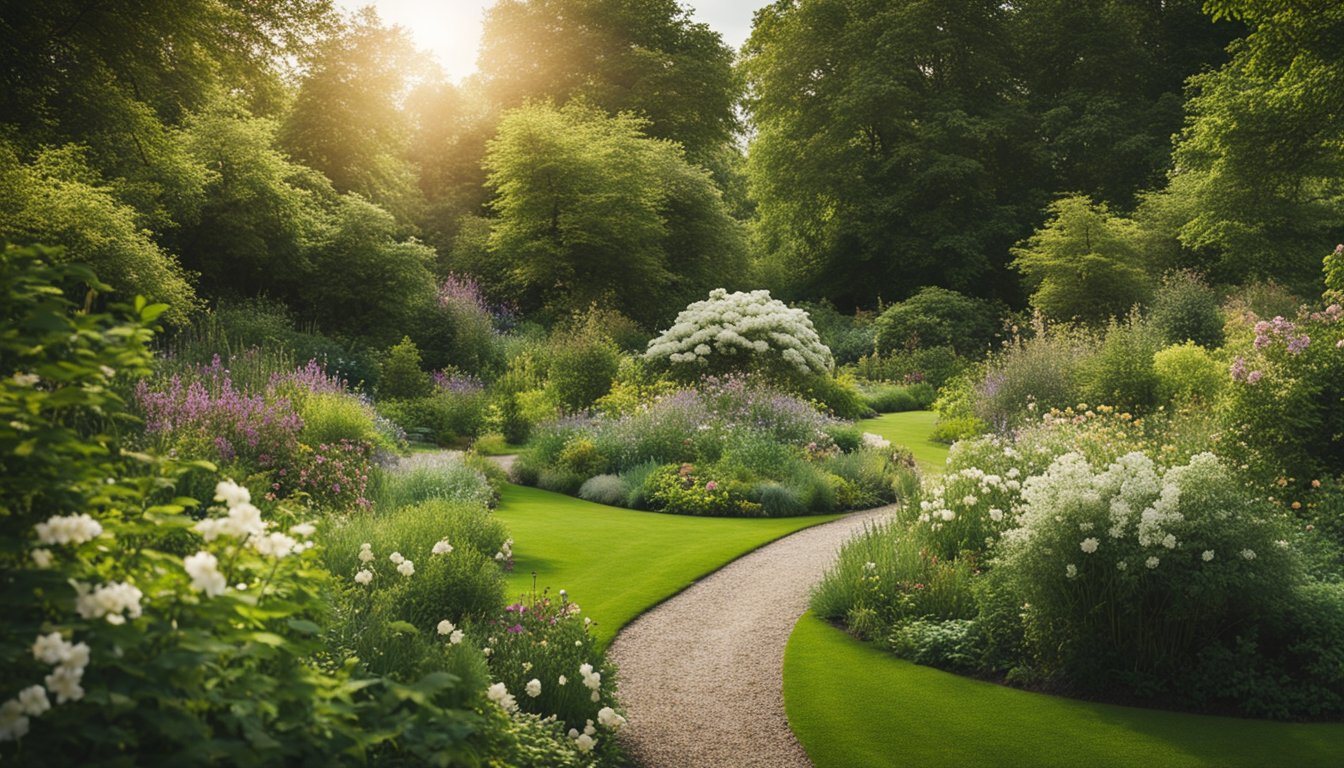Late updated: 17 Nov 2024 08:11
Written by: Emily Thornton
Maximising Garden Biodiversity With Native UK Trees: A Guide to Enriching Your Outdoor Space
In the quest to boost garden biodiversity, native UK trees hold the key to creating vibrant ecosystems right at home. Planting these trees is not just about enhancing the greenery but also about nurturing a miniature world where local wildlife can thrive. With the rich array of flora and fauna supported by native trees, we open up our gardens to hosting the intricate web of life.

These trees, having evolved alongside Britain's wildlife, provide essential food and shelter all year round. From the spring blossoms that attract pollinators to the autumn hues that offer shelter, native trees are indispensable for a flourishing wildlife garden. Creating a diverse habitat with these trees integrates seamlessly with efforts to support ecosystems and steward environmental health.
The affinity between native trees and local species fosters an environment where both can flourish. In a time when biodiversity is under pressure globally, our gardens become sanctuaries for wildlife. The balance of nature is delicate, and by choosing native trees, we contribute positively towards stabilising and enhancing local biodiversity.
Key Takeaways
- Native UK trees enhance biodiversity in gardens.
- These trees provide vital resources for local wildlife year-round.
- Gardens with native trees support diverse ecosystems.
Understanding UK Native Trees and Their Role in Biodiversity
Exploring how native UK trees contribute to biodiversity reveals their ecological significance. These trees support a variety of species and offer essential habitats and resources that sustain wildlife populations. Recognising their benefits aids in selecting the right trees for improving garden biodiversity.
Key Native Tree Species and Their Ecological Benefits
Several native species play pivotal roles in enhancing biodiversity. The English Oak (Quercus robur), for instance, supports over 300 species of insects, providing abundant food for birds and mammals.
Silver Birch (Betula pendula) also serves as a notable biodiversity hotspot, hosting numerous moth species. Crab Apple (Malus sylvestris) offers nectar and pollen, aiding pollinators, and its fruits are a food source for various animals. These species significantly contribute by forming symbiotic relationships with other plants, fungi and organisms, thus maintaining ecological balance.
Additionally, Hawthorn (Crataegus monogyna) bears berries that nourish birds in winter. In contrast, Blackthorn (Prunus spinosa) serves as a habitat for moth caterpillars, showing its dual-purpose function. Each tree species brings unique ecological benefits, playing vital roles in creating a rich and varied environment for wildlife.
Attracting Wildlife with the Right Trees
Selecting the right trees can greatly increase the diversity of wildlife in our gardens. Rowan and Holly offer berries that attract birds and mammals. Trees like Hazel bear nuts that feed small mammals such as squirrels.
Wild Cherry (Prunus avium) provides both flowers for pollinators and fruits for birds. Moreover, Juniper and Scots Pine are excellent examples of native conifers that provide shelter and nesting spots. Noticeably, trees meeting diverse ecological needs can optimise the garden as a thriving habitat.
By understanding the specific characteristics of these native trees, we can deliberately choose those that best complement our local environment and support its inhabitants. Implementing a mix of species ensures that a broad spectrum of wildlife benefits from food, shelter, and improved habitat conditions.
Creating Habitats and Supporting Ecosystems

In our quest to maximise garden biodiversity with native UK trees, we focus on structured garden design and essential natural elements. These provide a rich tapestry of habitats, making our gardens a sanctuary for countless species.
Designing and Managing a Wildlife Garden
Our wildlife gardens thrive with a mix of native trees such as Sorbus aucuparia (rowan), Prunus avium (wild cherry), and Ilex aquifolium (holly). These trees not only enhance the landscape's beauty but also offer food and shelter for birds and insects. Planting these trees strategically encourages wildlife diversity and resilience.
Long grass areas and wildflowers such as dandelions and nettles support insects and small mammals. By creating leaf piles and compost heaps, we provide further shelter for species like beetles, hedgehogs, and amphibians. Bug hotels are fantastic additions, giving solitary bees and beneficial insects a place to thrive. Crataegus monogyna (hawthorn) and Corylus avellana (hazel) densify the habitat with their dense foliage and fruits, appealing to various fauna, while maintaining vigilance against invasive species to protect native biodiversity.
Water and Shelter: Essential Elements for Biodiversity
Water features such as ponds or bird baths are vital. Even a small water source can attract amphibians, birds, and insects. Ponds support diverse life stages for species like dragonflies. A bird bath provides regular hydration and cleaning facilities for birds, crucial during dry spells.
Shelter is equally important. Dense plantings offer protection from predators and personal microclimates. We create understory layers through shrubs and leaf piles. This structure mimics natural woodland, providing refuge and breeding grounds. Let us focus on building a network of habitats that interconnect within the garden. By layering resources, we establish a web of life, promoting fauna to thrive year-round.
Frequently Asked Questions

Incorporating native UK trees into garden spaces not only beautifies the landscape but also enhances biodiversity. By selecting appropriate species and implementing supportive practices, we create thriving ecosystems that support a wide range of wildlife.
What are the best native UK trees to plant for enhancing garden biodiversity?
For boosting biodiversity in UK gardens, native trees such as the oak, rowan, and silver birch are excellent choices. Oaks can support thousands of species, while rowans attract birds with their berries. Silver birch thrives in various soil conditions, making it a versatile option.
What practices can be adopted in home gardens to promote native biodiversity?
Integrating a variety of native plants, reducing chemical usage, and providing habitats like log piles or water features can significantly promote biodiversity. Mulching with organic materials encourages healthy soil conditions. Allowing some areas to grow wild further supports diverse wildlife.
In what ways does increasing the diversity of plants benefit wildlife in UK gardens?
Plant diversity offers food sources and habitats for various species, from insects to birds. Diverse plantings encourage beneficial insects and pollinators, which in turn enhance plant health and crop yields. By enriching the garden ecosystem, we create a sustainable environment for a wide range of creatures.
Which factors should be considered when creating a biodiversity garden in the UK?
Consideration should be given to soil type, light levels, and local climate when selecting plants. Ensuring a mix of tree, shrub, and herbaceous layers supports different species. Native plants adapted to specific conditions generally require fewer resources and maintenance.
How do trees contribute to ecological diversity within a garden setting?
Trees provide structural habitats and microclimates, fostering various species that rely on them for food and shelter. Their root systems help maintain soil health and water balance, supporting entire ecosystems. By offering diverse environments, trees play a critical role in expanding garden biodiversity.
What techniques can farmers apply to boost biodiversity in their gardens?
Farmers can use practices like agroforestry, intercropping, and cover cropping to enhance biodiversity. Incorporating hedgerows maintains wildlife corridors, while reducing the reliance on pesticides protects beneficial organisms. Rotational grazing and maintaining wetlands incorporate biodiversity beyond traditional garden boundaries.
